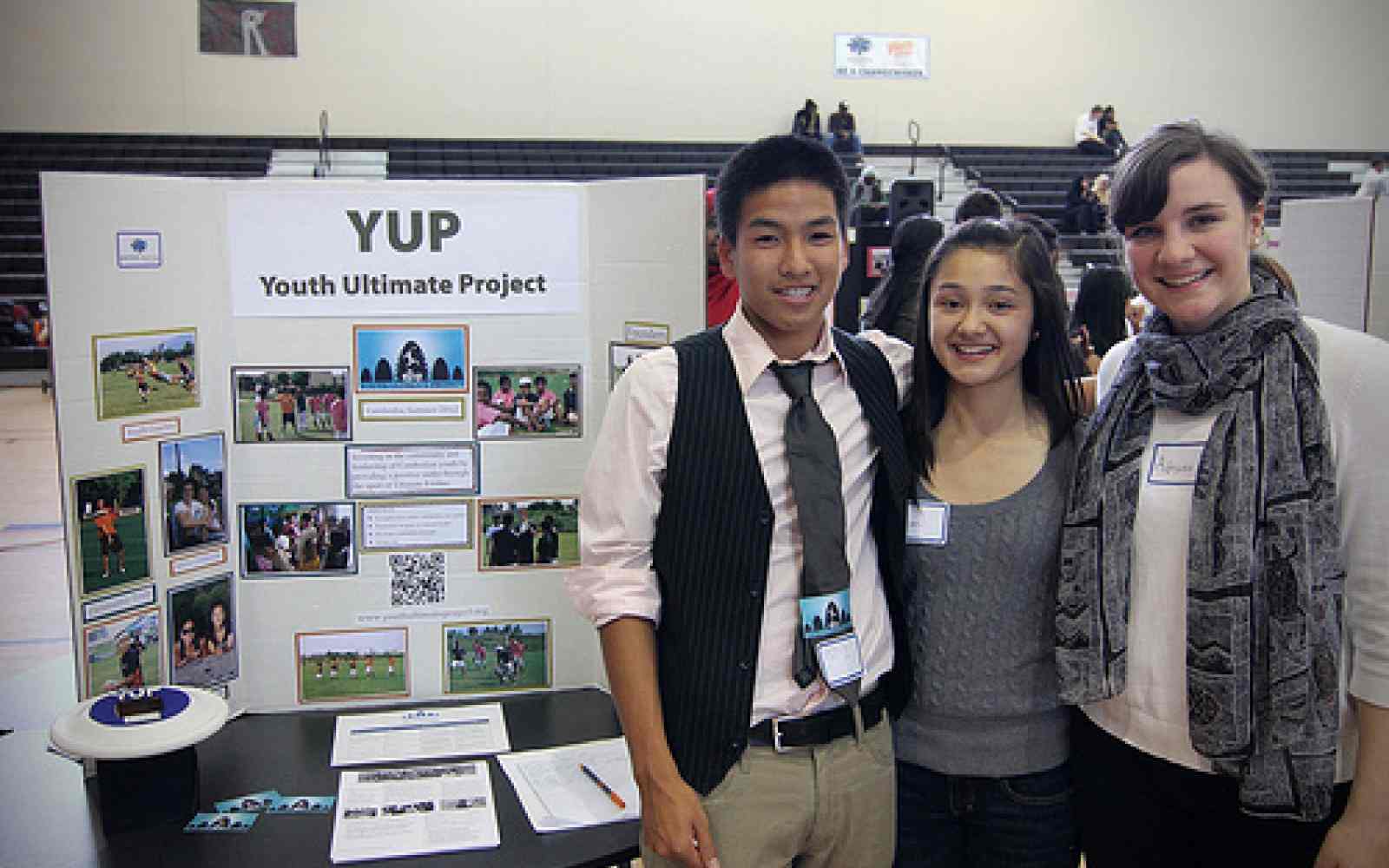On a non-descript evening in May a hub of social innovation pulsed with energy, attracting over 500 participants with solutions to social problems ranging from public health to citizen engagement and poverty alleviation. But this was no glamorous gala—there were no suits or linen tablecloths. There was no need for that accouterment. The setting was a high school gym, the innovators were teenagers, and the event was an astounding success.
Young entrepreneurs in Seattle showcase their venture, Youth Ultimate Project (YUP)
The breakdown
The gathering was hosted in Seattle by Ashoka’s Youth Venture, a program that enables youth from 12-20 years old to combine their passions and talents with real-world social entrepreneurship skills. The program encourages students to start and lead their own organizations for the betterment of their communities.
The event was an exhibition of in-progress social ventures launched by Youth Venture teams. The showcase gave students the opportunity to promote their solutions directly to each other and to the community. Eighty-four youth-led teams and over 500 participants were present—an impressive turnout for a bunch of high school kids. Besides their passion and enthusiasm, these young entrepreneurs offer us a few key insights.
Top 3 lessons from Ashoka Seattle Youth Venture Showcase
-
Young social entrepreneurs see big potential in small things. For example, one girl sold bracelets to raise money for her initiative. She couldn’t charge much for each bracelet, but she could sell a lot of them. Positioning herself outside the Mariner’s baseball stadium before and after ballgames, she collected $1,400. “Where else would there be so many people in one place with money to blow?” she thought.
-
While adults often have perspective on a problem in the community related to youth, young people may hold the key to thesolution, and they’re poised to use it. Don’t forget that youth have a unique insight to their generation’s challenges. For example, one group saw self-image as a barrier for young people and set out to turn “geek to chic” with a website promoting young social innovators rather than pop icons.
-
Young social entrepreneurs are capable of leading and creating positive change, but having validating experiences like the one at the Youth Venture Showcase is likely to spark the confidence to do so. By launching their own social ventures early on, many young people will be empowered to proactively solve social problems throughout their lives. For example, one project is now in its third year of organizing summer camps for kids of deaf or hard of hearing parents. The camps align mentors with the young people to provide a transformative experience. Another youth venture started as a breakdancing team and has evolved into an arts organization that creates job opportunities for underserved young people in sound and video editing.
In addition to Youth Venture’s Seattle branch, the program is planted across the United States and throughout the world.
